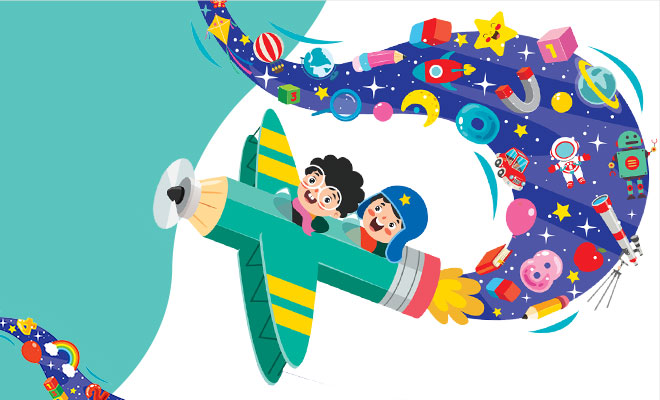“Mummy, I want that candy, not a biscuit!.”
You must have faced a similar situation of “I want this, not that” if you have a child. But have you ever wondered how children make this decision? Well, let us remind you this is nothing but the old and gold concept of “comparing and contrasting” things and making a decision based on that.
But do kids really have the knowledge of how to compare and contrast? If not, how can we teach them this concept? Well, we have this article for you on compare and contrast in English that will answer all your questions.
Let’s read the compare and contrast paragraph.
Why Does Your Child Need To Learn ‘Compare And Contrast’?
Comparing and contrasting are ways of looking at things or objects and determining how they are alike or different. Compare and contrast is an essential lesson that children must understand. This is an important concept because of the following reasons:
- It allows us to sort and classify things.
- It helps to think about and focus on important details.
- It clarifies the differences between related objects/events/concepts.
- It promotes the development of organisational skills.
- It supports the ability to evaluate things.
What Does Compare And Contrast Mean?
Here is the compare and contrast definition for children:
- Compare: Comparing involves identifying similarities and/or differences between two or more things.
- Contrast: Contrasting involves comparing two or more things in order to show their differences.
When Do Kids Start Learning About Compare And Contrast?
Comparing and contrasting is a way of finding out the similarities and differences between two or more things. This is an essential skill for children as they progress in their understanding and use of language. Practising comparing and contrasting can help them to improve their vocabulary, describing skills, sentence structure, and more. But, when do kids start to compare and contrast?
Children learn about compare and contrast –
- When they are in lower grades – 3rd, 4th, or 5th.
- When they are around 5-6 years old.
How Does One Compare & Contrast?
Do you know how to compare and contrast? Here we have explained it with compare and contrast examples.
1. Compare
In order to compare two or more things, one needs to look for the similarities or/and differences between those objects.
For example, apples and oranges are both fruits.
2. Contrast
When we look for the differences between two or more things, then we can say we are contrasting.
For example, apples have thin skin that we can eat, and oranges have thick skin that we cannot eat.
How To Teach Compare And Contrast To Your Kids
Teaching compare and contrast to kids can be an exciting adventure. Comparing and contrasting is an essential skill that can be a bit tricky for younger children. We have these teaching strategies for compare and contrast chart for children to understand the concept of comparing and contrasting.
Activities To Teach Your Kids About Compare And Contrast
Activities on compare and contrast for preschool kids are an excellent way of helping them see the differences between two seemingly similar things, ideas, objects or events or the similarities in things, ideas, objects or events which may seem completely contradictory. Comparing and contrasting help the little minds visualise complexities and build a deeper sense of understanding.
By including these activities on compare and contrast for kindergarten kids in your teaching plans, you can help them to have an understanding of this concept.
Let’s look at the activities on comparing and contrasting for children.
1. Compare & Contrast Cards
Make small cards with two things on each card that are similar but also different. For example, two different foods like burgers and hot dogs, two different animals like a rhino and a hippo, two different professions like a teacher and a lawyer or two different sports like baseball and football.
Now, ask your child to compare and contrast the two images on the card. They can do this verbally or by writing it down. Once your child is comfortable comparing and contrasting ordinary things, move them into applying this skill to reading and more complex activities.
2. Movie & Books
Many famous books have been made into movies. This gives children a great opportunity to practise compare and contrast. Make your child read the book and then make them watch the movie. Now, ask them to analyse how movies capture the important elements of the books they portray.
3. Justify The Ranking
When we give a rank or put things in a specific order based on certain criteria, we compare and contrast things automatically. You can use this ranking activity to teach your kid about comparing and contrasting.
For example, you can easily ask your child to name their top 5 favourite cartoons, from least favourite to top favourite. Then, ask them to give a reason. Your child will automatically be comparing and contrasting the cartoons they have in their head.
4. “Would You Rather” Game
“Would you rather” questions encourage the kids to choose between 2 options – and they automatically compare and contrast while thinking about what to pick.
For example, you can ask your child – “Would you rather like to have an ice cream or chips?”
With the help of such thoughtful questions and asking your child to defend their answers, you teach them to compare and contrast without them even realising it!
5. Fairy Tales
Fairy tales are fascinating, and children in lower primary classes generally know the story of common and famous fairy tales. If not, ask your child to read any two fairy tales with the same moral lesson and come up with the similarities and differences between the two tales. This way, they will also enhance their compare and contrast vocabulary.
We hope these activities will help your little ones understand how to compare and contrast two or more things. If you have any more fun ideas and activities to teach kids about this concept, do tell us in the comments below.
Also Read:
Modal Verbs for Kids with Types and Activities
Number Names for Children to Improve Math Skills
Compound Words for Kids in English with Examples









